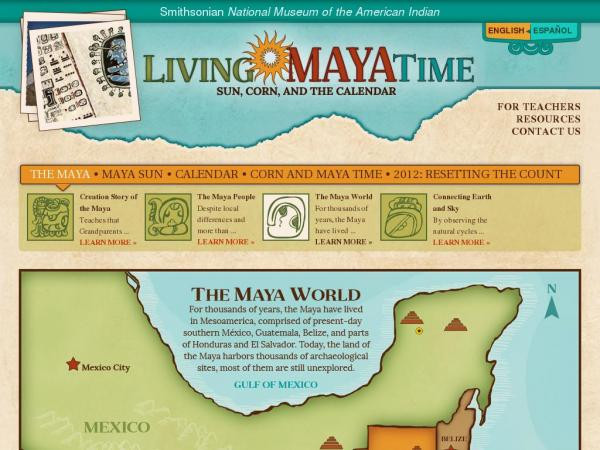Kate Harris
Social Studies teacher
Pittsburgh CAPA
Middle School (13 to 15 years old), High School (16 to 18 years old)
Teacher/Educator
Language Arts And English, Civics, Literature, Cultures, Economics, Social Studies, Geography, Writing, US History, Arts, Other
I'm a history-lover, art fan, and bookworm. I taught high school history (U.S. History and World Religions) for ten years in North Carolina, teach currently in Pittsburgh, PA, and am working to help teachers make the most of this new resource!
Kate Harris's collections
Responses to Immigration: Then and Now
<p>This collection will prompt thinking about attitudes towards new immigrants throughout our nation's history. What has changed and what has stayed the same?</p><p>It is also designed to allow users to explore the range of technical features and content resources available in the Smithsonian Learning Lab.</p><p>tags: immigrant, America, assimilate, nativism, stereotypes</p>
 Kate Harris
Kate Harris
10
Robber-Baron or Captain of Industry: Andrew Carnegie
<p>This collection includes different perspectives and information about Andrew Carnegie. Students are challenged to build an argument supporting one position or the other: Robber-Baron or Captain of Industry--using the resources as evidence. <strong>Was Carnegie an industrialist who desired to get rich and promote himself regardless of the effects on his workers? Or was he an example of the American dream, an industrial leader who improved the nation and helped its people?</strong></p>
<p>Investigate the items in this collection while thinking about those questions. After an initial review of the collection, complete the sorting activities at the end to test your understanding of the issue and begin to develop an argument reflecting your answer to the question above. </p>
 Kate Harris
Kate Harris
19
Running Fence
This teaching collection includes images and video of Running Fence, a work of installation art by Christo and Jean Claude. Included at the end is a lesson plan that engages students in analysis of Running Fence and details the steps for a student-designed installation art work at their school.
Learning goals include:
• Define installation art
• Analyze the process and results of the work of Jean-Claude and Christo to develop Running Fence
• Use the design process to develop a proposal for an installation art piece
• Use persuasive speaking skills to pitch your plan to the relevant stakeholders in your school community
• Plan and execute a piece of installation art on your school grounds, working cooperatively with a team
 Kate Harris
Kate Harris
46
School Integration
<p>The topic of K-12 school integration is a complex one that goes far beyond an understanding of that landmark case, Brown v. Board of Education of Topeka, Kansas. How have efforts at integration been sustained in the 60+ years since that case was first decided? How have concerns about socioeconomic differences been addressed (or not addressed) through school districting? How do district and national policies impact individual students for better or worse? This is a topical collection that addresses the history of school integration but also includes references to and resources reflecting the issue today.</p><p>Tags: segregation, Little Rock Nine, desegregation, charter schools, Arkansas, busing, Boston, racism, prejudice, civil rights</p>
 Kate Harris
Kate Harris
14
1950s Conformity and Counterculture
The 1950s were a period of post-war peace and prosperity. The growing economy and baby boom led to a culture of consumerism and growing Cold War tensions led to an embrace of all things American. This student activity includes a number of images reflecting the 1950s (most of them in postage stamp form). After investigating these images and evaluating how they support or challenge conformity, students are asked to research the counterculture that began to develop in the 1950s. The final assessment asks students to create a stamp image reflecting one of the people, events, or movements that pushed back against 1950s conformity. <br /><br />
Guiding questions:<br />
-What caused a sense of American conformity to develop in the 1950s? How was this feeling expressed?<br />
-What challenges to conformity existed in the 1950s?<br />
-Is it more "American" to conform or to rebel?
 Kate Harris
Kate Harris
19
Shinto Shrines
<p>How do religious rituals and practices reflect the core beliefs of a religion? This collection creates a virtual field trip to a Shinto shrine. Shinto is the indigenous religion of Japan, based on cultivating a positive relationship with the kami, or spirits present in the world. The religion of Shinto is centered around four affirmations. They are:</p><p>-Tradition and the family</p><p>-Love of nature</p><p>-Physical cleanliness</p><p>-Matsuri (festivals and ceremonies in honor of the kami)</p><p>Guiding questions include:</p><p>How are the four affirmations expressed in a visit to a Shinto shrine?</p><p>How does a shrine visit compare to visits to other houses of worship?</p><p>Tags: religion, culture, Japan, Shinto, shrines, analysis, compare contrast</p>
 Kate Harris
Kate Harris
14
Six Degrees of Separation Example: Lincoln's Axe to William Jennings Bryan
<p>This is a finished version of the "Six Degrees of Separation" AP USH review activity, including annotations explaining the links between objects. This may be useful to share with students the first time you try the activity. Note that connections should be deeper than similarities or coincidental links; they should reflect a causal relationship. In addition, you might ask students to present some analysis of the resources they chose, identifying key details.</p>
<p>The original activity is available here: <a href="https://learninglab.si.edu/collections/six-degrees-of-separation-an-apush-review-activity/C1stNx2FioYNAkWP#r" target="_blank">https://learninglab.si.edu/collections/six-degrees-of-separation-an-apush-review-activity/C1stNx2FioYNAkWP#r</a><br /></p><p><em>#historicalthinking</em></p><p><br /></p>
 Kate Harris
Kate Harris
6
Slavery and Slave Resistance in the Colonies
<p>This collection includes items that will help you understand the conditions that led to the growth of slavery and the ways in which enslaved persons resisted slavery. <br /><br />Guiding Questions:</p>
<ol><li>Why did slavery become increasingly important, especially in the Southern colonies?</li><li>How did "slave laws" support the system of slavery?</li><li>What does it mean to "resist" slavery? </li><li>How did white slave-owners respond to such actions? </li><li>Is maintaining a distinct cultural heritage a form of resistance? Why or why not? </li><li>How do religion, art, and music encourage resistance?</li></ol><p>You will answer your group's assigned question using at least 3 pieces of appropriate evidence from the collection included here. </p>
<p><br /></p>
<p><br /></p>
<p><br /></p>
 Kate Harris
Kate Harris
13
Socialism in the Gilded Age
<p><br><strong>Overview:</strong> When facing challenges in society, activists must determine not just what kinds of changes might need to be made, but how much change, and how fast. A study of the growing socialist and anarchist movement during the Gilded Age in the United States (with a focus on Pittsburgh), will help students analyze why some people might advocate for radical change while others fear it. Students will then apply their new understanding when discussing responses to current social movements. </p>
<p><strong>Questions for discussion throughout the lesson include:</strong></p>
<ol><li>What kind of change is/was needed? How might the answer to this question depend on your perspective (worker, farmer, politician, or business-owner?)</li><li>How much change is /was needed? How might the answer to this question depend on your perspective (worker, farmer, politician, or business-owner?)</li><li>Why might radical change be scary for some individuals but appealing to others? </li><li>What kinds of demands and strategies result in the most progress?</li></ol>
<p><strong>Pacing/curriculum: </strong>This lesson can be used when discussing the response of workers and the labor movement to Gilded Age industrialization, or as a point of comparison when studying the other social reform movements of the late 19th and early 20th century, Populism and Progressivism. Just prior to this lesson, students in my classroom would have been studying the problems of workers and city-dwellers during the Gilded Age and the rapid growth of industrialization.</p>
<p><br>The lesson is designed to be used during 1-2 70 minute class periods and can be implemented in an entirely remote learning environment. The first day could consist of the warm up around socialism, and the why did it appeal/why was it scary t-charts. The second day should focus on connections to today and the question of revolution vs. reform located in the second half of resources in the collection. <br></p>
<p>#civicdiscourse</p>
 Kate Harris
Kate Harris
37
Take Action on Air Pollution
<p>This collection of resources invites students to examine how societies have been convinced to take action regarding air pollution over time, and to craft their own persuasive message regarding pollution. Students will identify several different means of compelling individuals and groups to change their behavior in order to benefit the environment. They will then evaluate the effectiveness of those strategies. Finally, they will create their own message convincing others to take steps towards improving the environment. </p><p>Tags: smoke control, smog, pollution, environmentalism, earth day, advertising, persuasive writing, ad campaign</p>
 Kate Harris
Kate Harris
9
Teaching about Andrew Jackson
This collection includes artifacts, lesson plans, and teaching ideas about Andrew Jackson, including his role in the War of 1812 and his presidency.
 Kate Harris
Kate Harris
32
Teaching about the Chicano Movement
<p>This collection gathers resources and artifacts pertaining to the Chicano Movement of the post-WWII era. The following paragraphs, from the Educating Change website, briefly define the movement:</p><p>The "Chicano Movement" has been used by historians to describe a moment of ethnic empowerment and protest among Americans of Mexican descent beginning in the 1960s. "Chicano" had long existed as a pejorative term among young Mexican Americans prior to this period. By the 1960s, however, young Mexican Americans embraced the label, reinscribing it with notions of pride in ones' Mexican heritage and defiance against institutions and individuals who practiced or condoned discrimination against Mexicans.</p><p>The "movement" or movimiento was really a convergence of multiple movements that historians have broken down into at least four components: [1] A youth movement represented in the struggle against discrimination in schools and the anti-war movement; [2] the farmworkers movement; [3] the movement for political empowerment, most notably in the formation of La Raza Unida Party; and [4] the struggle for control and ownership over "homelands" in the US Southwest (<a href="http://www.brown.edu/Research/Coachella/chicano.html">http://www.brown.edu/Research/Coachella/chicano.ht...</a>). We will add an additional component of [5] creating art and music to reflect and voice cultural pride. </p><p>Students will review the collection here and identify five items that connect to one of the components listed above. They will then create their own collection that acts as a digital exhibit, teaching others about the Chicano Movement. This assignment is described in further detail on the last resource in this collection.</p><p>This is a work-in-progress based on the digitized materials within the Smithsonian Learning Lab's collection--it is not meant to be wholly definitive or authoritative.<br /></p>
 Kate Harris
Kate Harris
36









